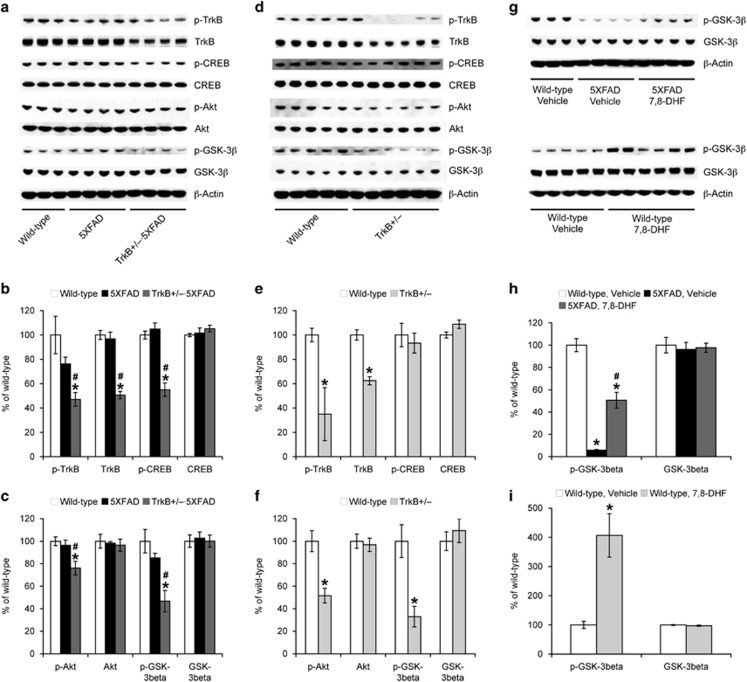Figure 3.
Effects of tropomyosin-related kinase B (TrkB) manipulations on hippocampal signaling aberrations in 5XFAD mice. (a, d) Representative immunoblots of protein extracts from hippocampal homogenates of mice. (b, c, e, f) Immunoreactive bands were quantified and expressed as the percentage of wild-type control mice (n=3–6 mice per group). Note that signaling has not yet been significantly affected in 5XFAD mice at 4–5 months of age, whereas impairments of CREB (cAMP response element-binding protein) and Akt/GSK-3β (glycogen synthase kinase-3β) phosphorylation pathways are exacerbated by TrkB reduction in 5XFAD mice (*P<0.05 vs wild type, #P<0.05 vs 5XFAD). Moreover, phosphorylation of Akt/GSK-3β, but not that of CREB, in TrkB+/– mice is significantly lower than wild-type controls. (g–i) Administration of the TrkB agonist 7,8-DHF not only restores deficient GSK-3β phosphorylation in 12-month-old 5XFAD mice but also significantly increases baseline levels of GSK-3β phosphorylation in wild-type mice (*P<0.05 vs wild type/vehicle, #P<0.05 vs 5XFAD/vehicle; n=3–6 mice per group). All data are presented as mean±s.e.m.

